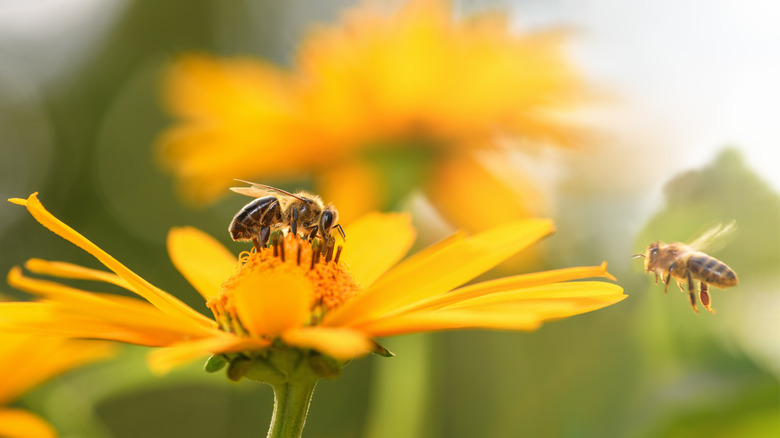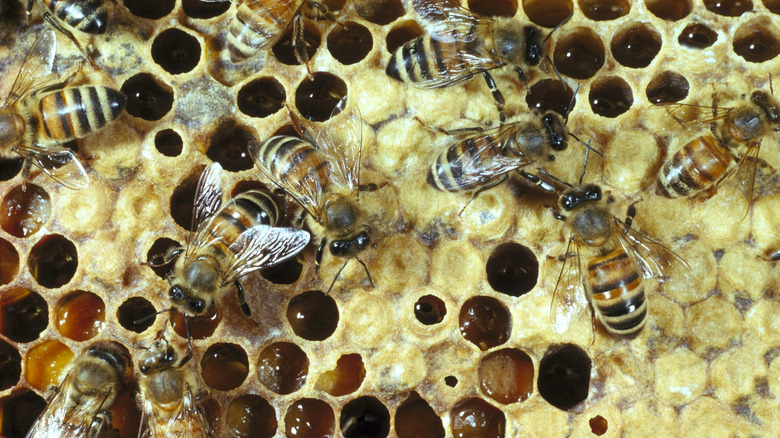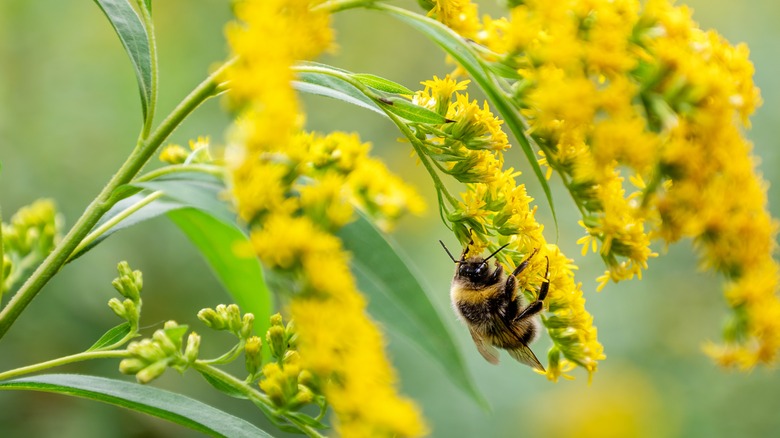What Is Colony Collapse Disorder And What Should Gardeners Know About It?
Colony collapse disorder refers to an ongoing condition affecting honeybee populations, causing the loss of many bees and drastically shrinking bee populations. It is believed to have a variety of causes, including pesticide and herbicide use. Gardeners should know that by making choices to help support honeybees, they're helping to lessen the negative impacts of colony collapse disorder, which can drastically affect food crops.
Colony collapse disorder is a phenomenon in which large numbers of worker bees suddenly disappear from their colonies, leaving behind the queen bee and some immature bees, as well as the food supply that has been built up. It was first discovered about 10 years ago, and studies are showing that it is not spreading as rapidly as it was once feared it would. However, colony collapse disorder still has grave implications for growers and consumers of all pollen-producing plants, especially food crops, including fruit trees. Orchard fruits are primarily pollinated by honeybees, and the loss of honeybee populations affects the ecosystem that includes other pollinators.
It's important for gardeners to be aware of the impacts of colony collapse disorder, as well as the possible causes, so they can make informed choices and take positive action to help prevent it. Reducing or eliminating the use of chemical pesticides and herbicides is one of the most important ways to help protect pollinators, including honeybees. Planting native plants and pollinator-friendly flowers can also be helpful in stabilizing pollinator populations.
Why reducing use of pesticides and herbicides helps honeybees
Many gardeners in recent years have made efforts to plant more pollinator-friendly plants, as well as reduce the use of toxic pesticides and herbicides, in an effort to respond to dwindling populations of pollinators such as monarch butterflies. The use of herbicides can destroy food sources for pollinators, many of whom (like monarch butterflies) rely on very specific plants for their nutritional needs. Pesticides designed to kill insects or rodents can also kill pollinators directly. Gardeners who want to help protect pollinators, including honeybees, should seek out non-toxic and natural solutions to weeds and pests.
As stewards of nature who engage with plants and horticulture on a constant basis, gardeners have an important role to play in the preservation of our ecosystem, and that includes helping protect pollinators such as bees. Many varieties of bees get their pollen from native plants, and these plant-insect relationships are products of millions of years of evolution. Agriculture and urbanization have displaced wildlife and insect populations by eliminating many native plants from their habitats. Adding native plants to gardens not only helps the landscape by lessening run off and erosion, but helps feed bees that depend on these specific sources of pollen.
Native plants not only support pollinators, but other insects and wildlife also, including birds and rodents. All of these creatures live in a symbiotic relationship in their natural habitats, and native plants can provide a crucial backbone for improving the ecosystems where we live.
The impacts of colony collapse disorder
Colony collapse disorder directly impacts the production of honey, as well as the beekeeping industry, which provides pollination services for farmers and growers. The disruption of pollination affects all aspects of the agriculture industry: without pollinators, many food crops simply won't grow. In this way, colony collapse disorder can potentially wreak havoc on our entire food supply, especially fruits, vegetables, and nuts. It is estimated that pollinators are responsible for one out of every three bites of food we eat. Colony collapse disorder not only has the potential to affect food supplies. The large portions of the worldwide economy that depend on agriculture, as well as food exports and food manufacturing, not to mention restaurants and grocery stores, would also be disrupted.
While colony collapse disorder is cause for concern on a global scale, there are also ways to address it at the local level. Gardeners who educate themselves about colony collapse disorder can become a source of information for their communities (including their local garden organizations or farmers' markets), and do their part to help protect honeybee populations. Encouraging the reduction or elimination of herbicide and pesticide use is an important first step toward protecting honeybees and other pollinators who help our food crops to flourish. Learning about native and pollinator-friendly plants and encouraging their use in landscaping is also a positive step toward addressing this problem.


